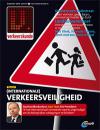‘What works in the Netherlands, might not work, or work differently, in other countries’
Fred Wegman, SWOV:
‘We can educate and support local experts, but they have to analyse and solve their road safety problems themselves.’
The United Nations have decided to apply the Safe System Approach, based on the Dutch Sustainable Safe, in order to halve the number of traffic fatalities in 2020. Implementation of this approach by local experts is, according to Fred Wegman, advisor at Stichting Wetenschappelijk Onderzoek Verkeersveiligheid (SWOV), and professor road safety, the best route to success.
In order to radically reduce the number of traffic fatalities worldwide, in 2011 the United Nations (UN) started the Decade of Action for Road Safety. To this end they apply the Safe System Approach, which is based on the Dutch Duurzaam Veilig (Sustainable Safe). ‘But what works here, might not work, or work differently, in other countries’, says Fred Wegman, advisor and former managing director of the Dutch Stichting Wetenschappelijk Onderzoek Verkeersveiligheid (SWOV), and professor of road safety at Delft University of Technology. ‘Countries differ enormously in, for example, culture, level of motorisation, mortality, and the policies that are in place. That requires a tailor-made approach that does not necessarily have to be completely unique for each country. Usually it is about the same type of measures applied differently.’
According to Wegman, the best method is for local experts, having knowledge about the local circumstances, to implement the Safe System Approach themselves. ‘We can transfer knowledge to these people and support them, but they have to analyse their own problems and come up with their own solutions. As a discussion partner I regularly think along with experts in various countries, but in the end they have to do it themselves.’
As an example of how Dutch knowledge about traffic safety can be applied to other countries, Wegman mentions the bus systems of Latin America. ‘Some big cities prefer to build metro systems for fast inner-city transport, but for countries in this region this is a too high investment. Therefore, they nowadays choose for Bus Rapid Transit (BRT): buses running with a high frequency on a dedicated track in the middle of an existing road. That places them for safety issues, though, regarding passengers crossing the road and the passage of intersections. While we are not familiar with this type of BRT-systems, our Sustainable Safe principles can be translated to this situation. Amongst other things, these principles were used to write a manual on how to design safe bus lanes.’
Bogotá (Colombia) has a Bus Rapid Transit-system that also pays attention to the safety of the passengers that have to cross the street
Pakistan is appointing the army to enforce traffic
In Delhi, India, Wegman saw that the same approach for fast and cheap transport can also fail. ‘The prohibition for car drivers to drive on the bus lane is in fact not enforced in India, so cars abundantly make use of these bus lanes. Enforcement is one of the important pillars of road safety, and therefore it is difficult to take large steps in road safety in countries with a culture in which the police are not respected and people interpret fines as a way for the policeman to increase his income. Unfortunately, corruption among the police is widespread in many countries. In Pakistan, for example, this was solved by appointing the army to enforce safety at the motorway system, but that really is a last resort. It would be better to change the whole police system in these countries, but that is not very easy.’
There still are some inevitable challenges to make traffic safer worldwide. At this moment there are 1.3 million traffic fatalities yearly, and if nothing changes it is estimated that this number will increase to 1.9 million in 2020. The UN aim at halving this number to a worldwide yearly maximum of 950.000 fatalities in 2020. ‘The problem of road safety has been taken up by many organisations’, says Wegman. ‘But at this moment, I do not see any substantial changes. A FIA project, in which I cooperate on behalf of the SWOV, investigates whether the prognosed trend has already been broken, for example, as a result of the economic crisis, or, even better, as a result of implemented traffic measures. But at this moment I do not expect that that is yet the case.’
No more wine at lunchtime
While it is difficult to inverse the trend, according to Wegman it is not impossible. ‘We have seen that several countries in Europe, like France and Ireland, have made huge steps in a very limited amount of time. At first we thought it would be impossible, because a change in culture was needed; no glass of wine at lunchtime or a few pints anymore before driving, for example. So it can be done, but I still see enough challenges, for myself as well, to speed up the process.’
Influence political decision making
Opportunities can be found in the field of international cooperation, which is being explored by the FIA project that Wegman participates in, and of which the results will be available later this year. ‘We investigate how member clubs from different countries can learn from each other, for example about how to influence political decision making in their own country. In addition, we assess the role of the international players in the field of road safety, such as the World Health Organization and the World Bank. Recommendations will follow from this analysis as to what FIA and its president can do on the international stage to improve road safety.’
Auteur: Joske van Lith

Fred Wegman, advisor at SWOV (Scientific research Institute road safety), professor of road safety


Reactie plaatsen •